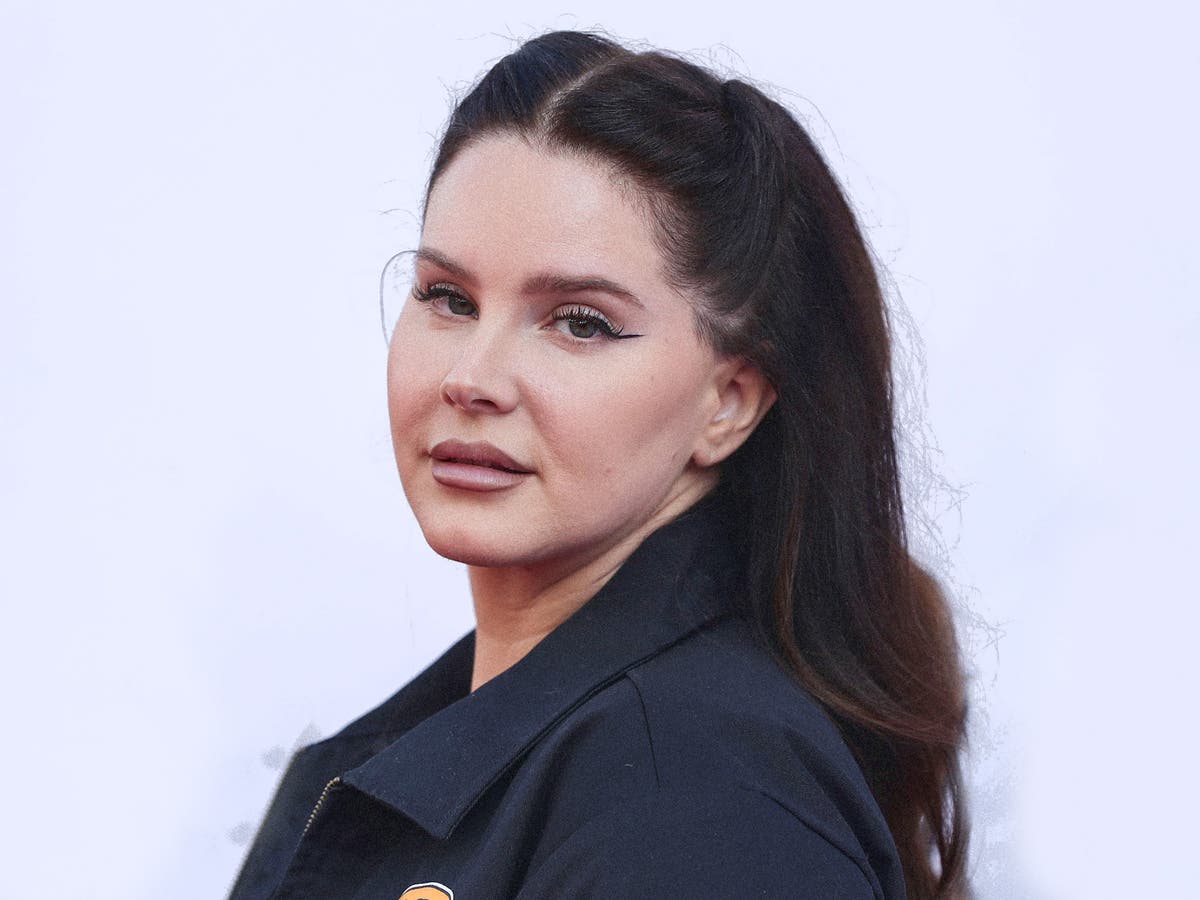Over the weekend, new photographs of Lana Del Rey hanging out at the Malibu Chili Cook-Off went viral. Wearing baggy blue jeans and a flannel shirt over a cropped polo tee, she’s carrying a red Chanel handbag; her hair is styled into pigtail braids held by green and gold scrunchies. She looks unbothered. Moisturised. Content. In her lane.
So trust social media to pull the singer’s appearance apart from the moment the images hit the internet. Del Rey looks different at the age of 37 compared to her Born to Die days, when she was in her mid-twenties. This has predictably attracted all manner of nasty fat-shaming comments, despite Del Rey’s size being simply none of our business. Amid the abundance of fatphobia, some also criticised Del Rey’s style in the photographs, describing her clothing as “awful” and that she “couldn’t find a less flattering outfit”. Others came to Del Rey’s defence: “If a stick thin celebrity wore this, ya’ll would eat it up and say they look amazing.”
There is a lot of truth in this. A similar outfit worn by the likes of, say, supermodel Bella Hadid, routinely becomes “fashion goals”. Someone bigger is not viewed through the same lens: the exact same sense of style becomes warped and a target of shame and mockery. The fact that this is still happening in 2022 shows how little we have moved away from thin privilege and fatphobia, with people who aren’t skinny still having to work much harder to prove they have style.
“The outfit is not deemed stylish or fashionable because the body in it is not,” says Chanelle Mauricette, a plus-size model who champions body positivity on her Instagram. “Thin models, [and] thin, striking and beautiful women are hailed for their outfit choices because their look extends through their clothing. The same is true for bigger women, but with the opposite effect.”
I used to think that I could never hope to be fashionable because of my body. While scrolling on social media, a thin, beautiful person wearing some iteration of a basic T-shirt and jeans will inevitably pop up. She always looks devastatingly cool, leaning back against a wall or posing casually in front of a mirror. The post will be unbearably popular, with thousands of likes and heart-eye emojis flooding the comments.
But I would put on all the same outfit components and be immediately disappointed. I’d feel like I’d somehow failed to embody the same level of coolness as these women. I thought it was my body’s fault for looking dowdy instead of cool, plain instead of chic. Maybe, as a bigger person, being stylish just wasn’t on the cards for me.
My perspective completely changed when I came across some of the best fashion advice I’d ever heard a few years ago. When the body positive movement became widespread on Instagram, many influencers started advising their followers to ask themselves: “Skinny or a ‘fit?’” This meant questioning the fashion content that we are fed on a day-to-day basis, taking a step back and asking ourselves if the outfit a person is wearing is truly good, or whether we’ve just been conditioned to think it looks good because the person wearing it is skinny.
The idea has been popularised over the last two years on TikTok, where a trend called “Skinny or Fashionable?” saw users examining the style of fashion darlings like Kendall Jenner and Hailey Baldwin. Plus-size TikTokers began recreating outfits they saw on thin celebrities and models, making judgements on whether the clothes were genuinely interesting. But this wave of self-awareness hasn’t lasted, and – as illustrated by the discourse around Del Rey’s appearance – we’re back at square one.
The outfit is not deemed stylish or fashionable because the body in it is not
Chanelle Mauricette
“The fact remains that bigger bodies aren’t widely viewed or accepted as being beautiful,” Mauricette says. While the body positivity movement has helped normalise non-supermodel bodies, “bigger bodies [are still] marginalised by conventional beauty standards”, while many thin, able-bodied women have “taken a great deal of space in the movement”, she adds. In particular, the space has been consumed by the trend of conventionally attractive women posting “posed versus relaxed” selfies of themselves, in which one photo taken at a specific angle so they appear at their thinnest is placed side-by-side with another selfie showing the slightest hint of a tummy roll.
Felicity Hayward, a curve model and author of Does My Butt Look Big in This?, says “the reason the public is so quick to mock someone’s weight is the fact we still live in a fatphobic culture.” She adds that the media wants to “control our own views on bodies and [make us hate] people who have gained weight – to ultimately sell diet plans, weight loss teas and body-changing beauty products”.
We need to stop policing women’s bodies in particular when it is navigated from places of greed, power and money made on selling products
Felicity Hayward
“If you look back at the last 100 years and how women in particular are manipulated through body image, no wonder we still have people trolling others for weight change. We’ve gone from the 1920s when women were given tape worms to lose weight, [to the] 1940s [when they were] told to smoke cigarettes to reduce appetite cravings, all the way to the 1990s, when the term ‘heroin chic’ was fashionable. We need to stop policing women’s bodies in particular when it is navigated from places of greed, power and money made on selling products.”
Watching Del Rey, who at her thinnest was idolised as a “queen” or a “goddess”, getting picked apart for daring to put on weight has been infuriating. It perpetuates the idea that women should be ashamed of their bodies changing and that fatness should be hidden from public view. I, for one, plan to continue wearing what I want. No matter how ugly the internet makes me feel.

